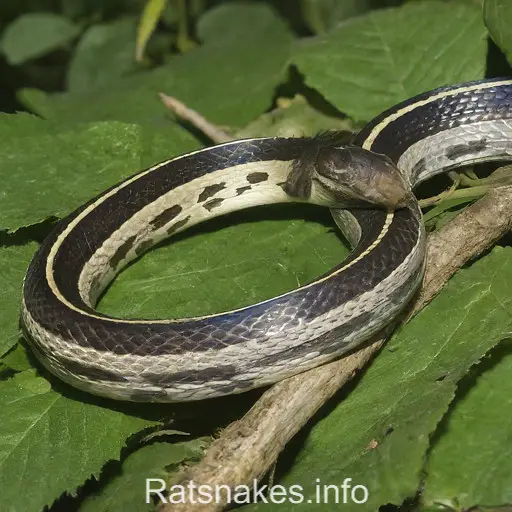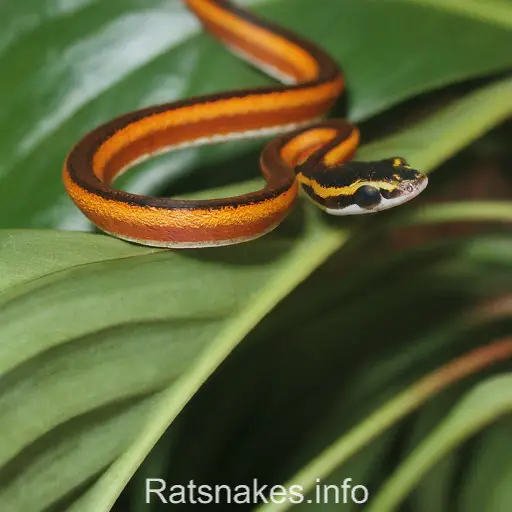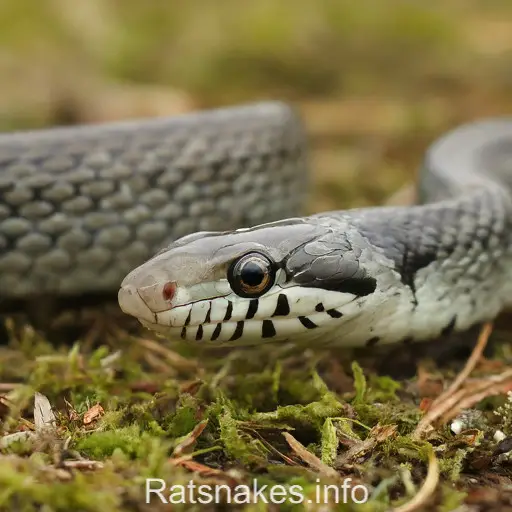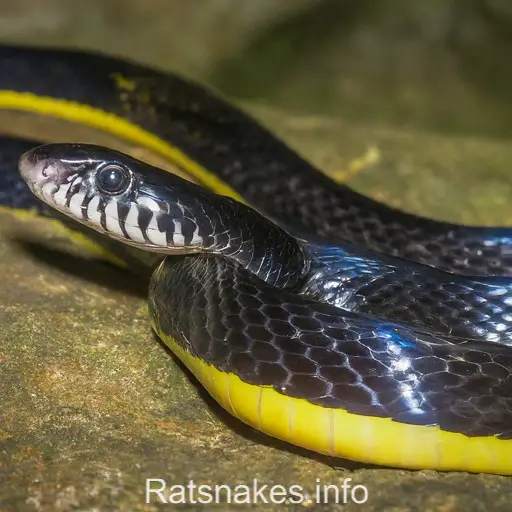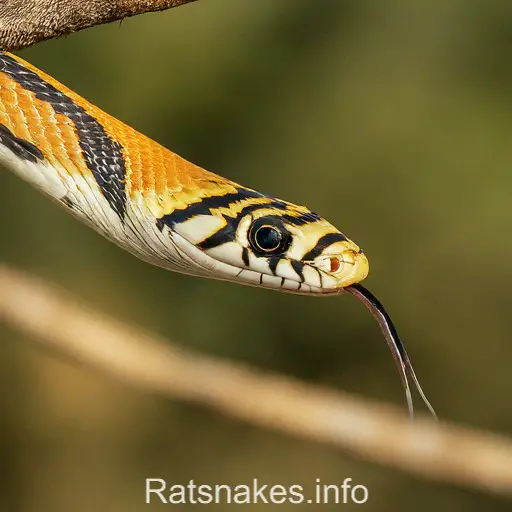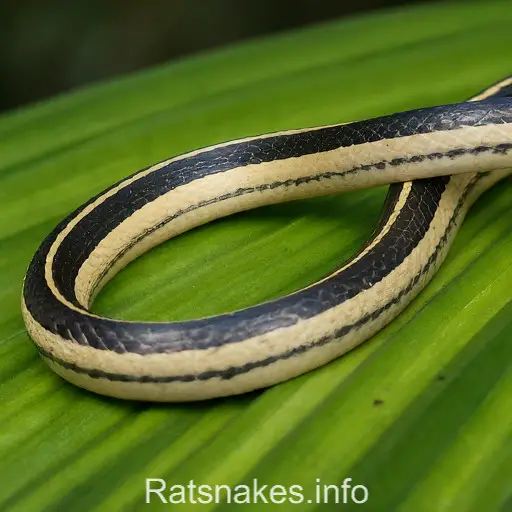
Welcome to our guide on the fascinating black-banded trinket snake. These sleek reptiles are known for their striking appearance and unique behaviors. Let’s dive into the world of these elusive serpents and uncover what makes them truly special.
With their distinctive black bands and slender bodies, black-banded trinket snakes are a sight to behold in the wild. Join us as we explore their habitat, diet, and natural predators. Discover how these snakes have adapted to survive in their environment and what sets them apart from other snake species.
Join us on this educational journey as we unravel the mysteries of the black-banded trinket snake. From their hunting techniques to their role in the ecosystem, we’ll provide you with valuable insights into these remarkable creatures.
Appearance of Black-Banded Trinket Snakes
When it comes to the appearance of Black-banded trinket snakes, they truly stand out in the snake world. These snakes are known for their distinctive black bands that run the length of their slender bodies. The contrast between the rich black bands and the light scales in between creates a visually striking look that sets them apart from other snake species.
Black-banded trinket snakes typically have a sleek and slender build, allowing them to move stealthily through their natural habitat. Their bodies are usually no thicker than a pencil, enabling them to navigate through tight spaces with ease. This slim physique also aids in their hunting techniques, making them efficient predators in their environment.
In addition to their black bands, these snakes often showcase unique patterns and colors on their scales, adding to their overall aesthetic appeal. From shades of gray to hints of brown, each Black-banded trinket snake may have slight variations in coloration that make them even more fascinating to observe in the wild.
Overall, the appearance of Black-banded trinket snakes is a perfect blend of beauty and functionality. Their striking colors not only serve as a form of camouflage but also contribute to their mysterious allure in the animal kingdom.
Habitat and Distribution
When it comes to Black-Banded Trinket Snakes, these fascinating creatures are typically found in forested areas, especially in tropical and subtropical regions. In terms of habitat, they prefer moist environments, such as rainforests, woodlands, and marshes, where they can thrive and hunt effectively.
Black-Banded Trinket Snakes are known to have a relatively wide distribution, being found in various countries across Southeast Asia. Some of the regions where you might come across these snakes include Indonesia, Malaysia, Thailand, and the Philippines. Their adaptability to different environments contributes to their success in diverse ecosystems.
These snakes are often observed in lowland areas but can also be spotted in higher elevations, showcasing their adaptability to different altitudes. Their ability to inhabit various types of landscapes makes them a versatile species that can thrive in different conditions.
Diet and Feeding Habits
When it comes to the Black-Banded Trinket Snake’s diet, it primarily consists of lizards and small rodents. These agile snakes are known for their excellent climbing abilities, allowing them to hunt their prey up in the trees. We often observe them patiently waiting for their unsuspecting meal to cross their path. Once in striking distance, these snakes use their quick reflexes to capture their prey with precision.
One fascinating aspect of their feeding habits is their ability to consume prey larger than their own head due to their unique skull structure and flexible jaws. This enables them to swallow their meals whole, showcasing their remarkable adaptability in the wild.
Their feeding habits play a crucial role in maintaining the balance of the ecosystem they inhabit, controlling the population of smaller creatures like lizards and rodents. By preying on these animals, Black-Banded Trinket Snakes contribute to the natural regulation of wildlife populations in their environment.
Overall, their diet and feeding habits are essential not only for their survival but also for the overall health of the ecosystem they are a part of. These snakes are true predators, playing a vital role in the intricate web of life in their habitats.
Adaptations for Survival
One of the most fascinating aspects of Black-Banded Trinket Snakes is their remarkable adaptations for survival in their natural habitat. These agile predators have evolved several key features that set them apart in the animal kingdom.
- Camouflage: Their distinct black bands help these snakes blend seamlessly into their surroundings, providing effective camouflage against potential threats.
- Venomous Bite: Black-banded trinket snakes possess a potent venom that aids in subduing their prey, showcasing their efficiency as hunters.
- Climbing Abilities: Their exceptional climbing skills allow them to navigate through trees effortlessly, giving them an advantage in hunting for prey.
- Flexible Jaws: With a unique skull structure and highly flexible jaws, these snakes can consume prey larger than their head, ensuring they can feed on a variety of prey items.
- Thermoregulation: These snakes can regulate their body temperature effectively, enabling them to thrive in diverse environmental conditions.
The combination of these adaptations makes Black-Banded Trinket Snakes well-equipped to survive and thrive in their natural habitats.
Importance in the Ecosystem
The Black-Banded Trinket Snake plays a vital role in its ecosystem. As a predator, it helps control small rodent populations, contributing to the balance of the food chain. By preying on rodents, these snakes assist in regulating the population of these smaller animals, thereby preventing potential ecological imbalances.
Moreover, their diet consisting of rodents benefits agricultural areas by naturally controlling pest populations. This indirect impact on agriculture highlights the indispensable role these snakes play in maintaining a healthy ecosystem.
Additionally, the Black-Banded Trinket Snake serves as prey for various larger predators, further demonstrating its significance within the food web. Maintaining the population of these snakes is crucial for sustaining the biodiversity of their habitat and ensuring the overall health of the ecosystem.
Key Takeaways
- Black-banded trinket snakes are known for their striking appearance with distinctive black bands running the length of their slender bodies.
- They are typically found in forested areas, especially in tropical and subtropical regions, thriving in diverse ecosystems.
- These snakes primarily feed on lizards and small rodents, showcasing excellent climbing abilities to capture their prey.
- Black-banded trinket snakes have evolved adaptations such as camouflage, venomous bite, climbing skills, flexible jaws, and thermoregulation for survival.
- They play a vital role in the ecosystem by controlling rodent populations, aiding in agricultural pest control, and contributing to the biodiversity of their habitat.
Conclusion
The Black-Banded Trinket Snake plays a crucial role in its ecosystem by controlling small rodent populations, thus maintaining the delicate balance of the food chain. As predators, these snakes help regulate the numbers of smaller animals, preventing ecological disruptions and aiding in pest control in agricultural areas. Additionally, being prey for larger predators underscores their importance in preserving biodiversity and the overall health of the ecosystem.

